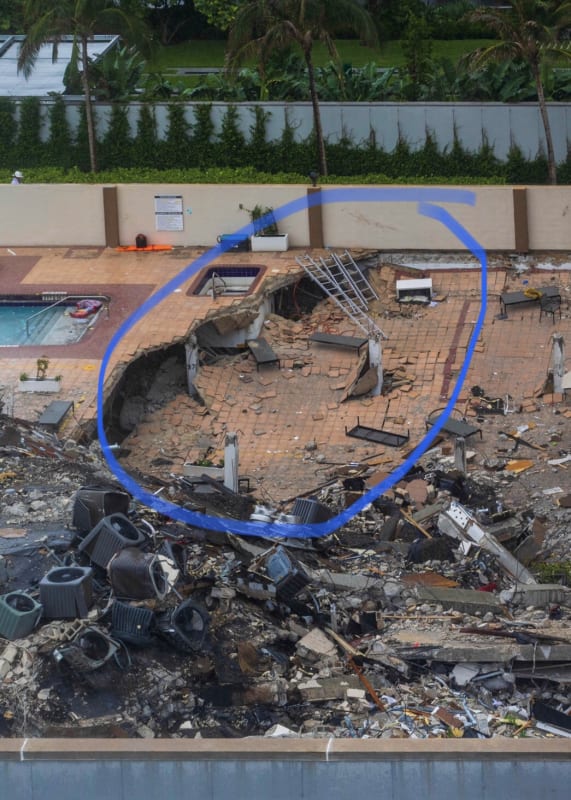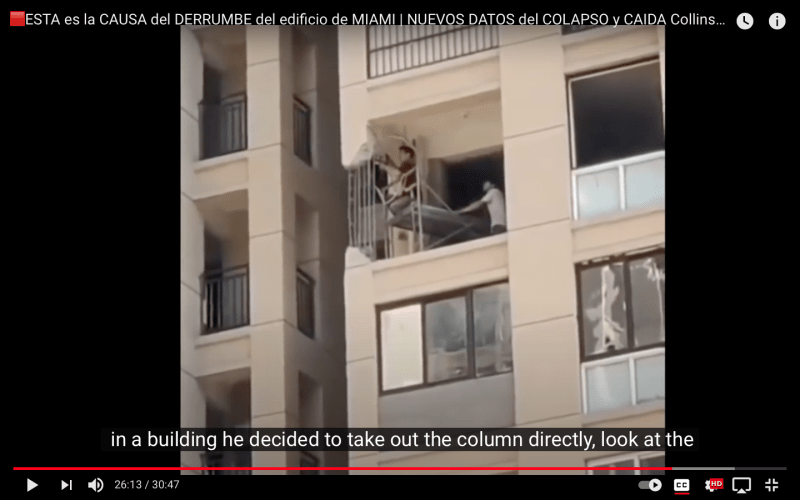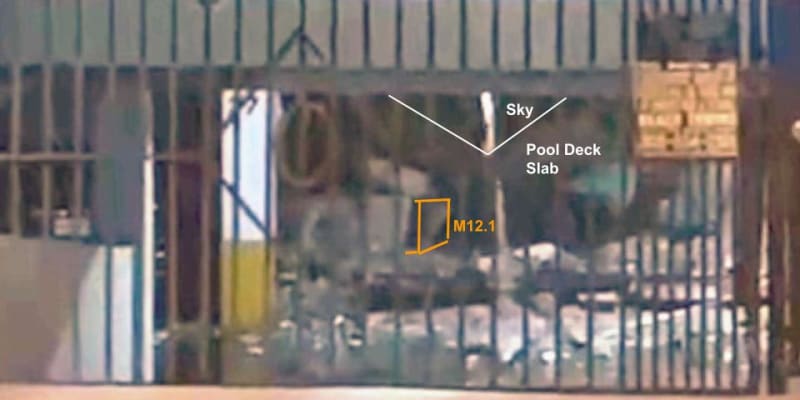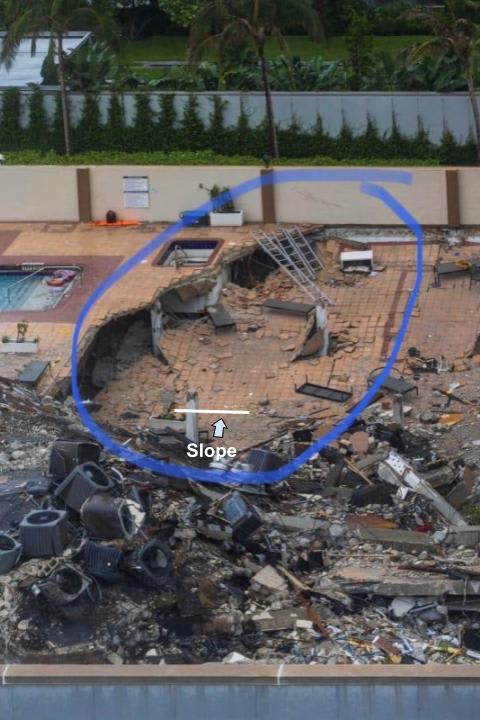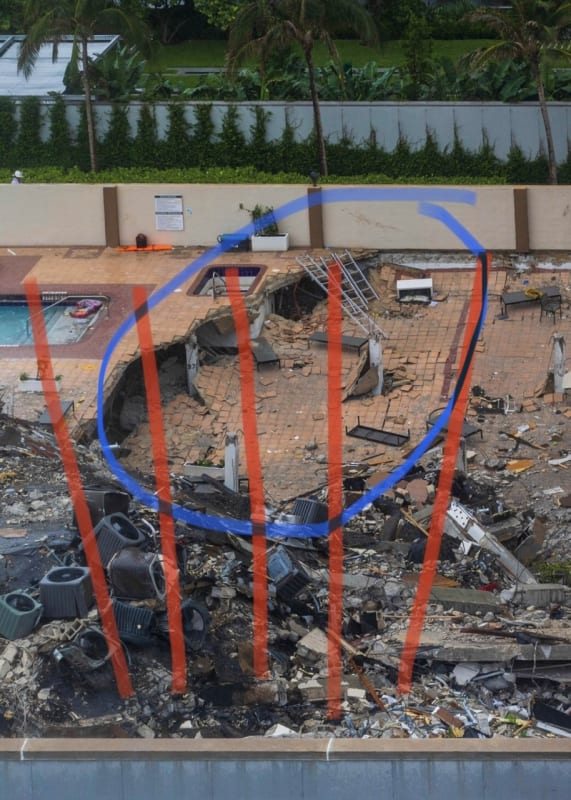The more I look at the slab step from pool to patio level in the K-M 9.1-11.1 area, the more concerned I get. The construction details show a couple of bottom bars and a couple of top bars making a beam of sorts at these slab transitions. However, the pool level slab is basically hanging from the bottom of the 'beam' which means that it is really just relying on its own steel and concrete in tension for support. To complicate that, heavy planters are installed right on that edge in really the worst possible location.
Considering some of the other alarming things we have seen in the reinforcement steel, it is possible and maybe even likely that the pool slab was poured first and then the top half of the 'beam' and patio slabs were poured on top of the pool deck. This would pretty much eliminate any support along that edge. Also, although there are small beams along the K-M column lines, these are also stepped with the deck. Depending on how the steel was laid and how the slabs were poured, these beams may not provide much support.
My theory is that the pool level slab lost support midway between lines 9.1 and 11.1, probably right at the step-up. This overloaded M11.1 and L11.1 for certain, and probably also K11.1 to start. I am 90% certain that the stills from the garage entrance show that the planter that was on top of M11.1 punch sheared over the column and this caused the column to collapse. I think that the lower yellow part of the column is inside of the planter and the top part is broken and laying on top of the planter. The next bay to the north (M-N) does not have a patio level slab and appears clear of debris.
If, as I suspect, the failure was midspan, you would then have the patio slab hanging off the the 9.1 columns and likely attached with a few hook bars. While the moment load would be large, I don't think it would have been fatal. However, it is not hard to imagine the hook bars taking large chunks out of columns K, L, & M on the 9.1 line. The building might withstand one damaged column, but three in line on the outside line of the building would likely bring it down. Had everything been on the same level, the bars would have been continuous over the columns and this probably would not have been an issue.
There was also progressive failure of the slab from north to south, which from witness accounts probably happened before the 9.1 column line failure. However, none of this really mattered, once the slab failed between 9.1 and 11.1 the building was doomed. Similar column failures did not happen along column line I on the southeast side of the building because the slab was one level and dropped as a unit instead of being cantilevered and damaging the column as hook bars pulled out.
Potential Causes:
1) Design - While the design my have met all RCC codes at the time, the slab steps midway between column lines is less than ideal, especially with the planters added right on that step. Drainage for the exposed slabs appears to have been inadequate.
2) Modifications - It appears that planters were added over the years that may have made matters worse. These is a flat planter south of the original taller planters and the large square planters on line 11.1 appear to have been added as well. These contained palm trees for several years and added considerable weight.
3) Construction - Rebar placement does not appear to have been done according to plan and there are several disturbing pictures of atypical punch shear, evidence of very poor column/floor attachments, etc.
4) Maintenance - Allowing water infiltration for years was clearly an issue and needed to be dealt with more aggressively. It also appears that some of the work was not done properly and this all contributed. Not that one top bar was the difference, but I would not like to have to defend coring through it when methods exist for avoiding that issue.

